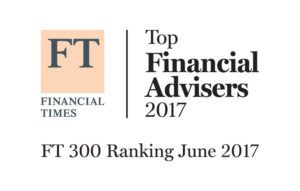The Bond Market Corner – Winter 2019

In the fourth quarter of 2018, equity and bond markets reversed direction from trends established through most of the previous nine months. Tough talk on tariffs and more signs of a slowing economy both in the US and globally weighed on equities, while at the same time helping treasury bond prices advance (leading to lower yields). There was much talk of the Fed pausing in its tightening cycle in response to the decline in equity markets worldwide as well as to clear signs of economic weakness. However, on December 19, the Fed raised the Federal Funds rate by .25% and signaled it would likely raise rates two more times in 2019. Although this was a slight downward adjustment from previously when it was thought they would raise rates three times in 2019, the risk markets were disappointed and continued their decline lower. This increase puts the Federal Funds target rate in the range of 2.25%-2.5%. The Fed did acknowledge that there are more risks to global growth reflected in its softened language regarding future increases in interest rates. Early in 2019 the Fed signaled it will likely slow its rate increases further, if not stop them altogether, in response to equity market volatility and its impact on the economy.
The 10-year treasury yield ended the year at 2.69% down from 3.05% at the end of the third quarter but up from 2.41% at year-end 2017. The 10-year yield rose to as high as 3.23% during the quarter before declining as investors sought safety in government bonds. Bond investors are concerned the Fed’s interest rate plans could lead to a slower pace of growth. Additionally, tariffs on US goods could hurt exports of domestic companies, adding to growth concerns. The closely watched spread between the two-year and 10-year yield ended at 21 basis points—this compares to 24 basis points at the end of September and 53 basis points at year end 2017. As a reminder, we are watching this closely as a flattening yield curve typically signals potential economic weakness; investors are more inclined to invest longer for less yield when they expect rates to decline further in response to a softening economy. While the 2/10 spread is still positive, other parts of the curve have turned negative. For example, investors can now invest in a one-year treasury bill and earn more than a two– or five-year note. The two-year treasury is now yielding about the same as the five-year. What this shows is investors are concerned the Fed may raise rates too much leading to an economic slowdown and lower rates. Therefore, they are inclined to accept a lower yield for a longer term to lock in that rate in the expectation that interest rates may decline. This is a phenomenon that bears watching.
In 2018 the expectation was that with a continued strong economy, inflation would increase and bond yields would rise significantly in response. Investors who believed this would have purchased inflation protected bonds. These bonds do well when inflation is rising since their principal value increases with inflation. However, higher inflation did not materialize. Price levels remain within the Fed’s 2% target range. As a result, the 10-year breakeven inflation rate stands at a low 1.7%. This number represents the difference between the nominal US treasury 10 bond yield and the inflation protected 10-year bond yield. Essentially, this is the level of inflation investors expect each year for the next ten years.
With price levels seemingly under control and volatile equity markets, the Fed’s next move may in fact be to do nothing and perhaps to even reduce rates.
The case for corporate bonds
In the fourth quarter, corporate bond spreads widened along with the decline in equity markets. However, for the year 2018, despite rising yields and widening spreads, owning corporate bonds turned out to be a relatively sound strategy. Corporate bonds which trade at a yield spread over treasuries did suffer as their spreads widened with the decline in the equity markets. However, even with treasury yields increasing and spreads widening during the year, the value of many of these bonds were not significantly impacted. Many of our clients have invested in a bond ladder made up of a series of maturities. With a bond ladder the bond holdings will roll down the yield curve. In other words, a five-year bond at the end of 2017 is now a four-year bond at the end of 2018. Since shorter term bonds trade at a smaller yield premium to treasuries and also decline less in price for a given change in yield, the rolldown helps preserve value.
An example will illustrate this point (see chart below).
| 12/31/2017 | 12/31/2018 | |
|---|---|---|
| 3-year treasury yield | 2.01% | |
| 2-year treasury yield | 2.67% | |
| Yield spread to treasury | +35 | +50 |
| Yield of Corporate bond 2% coupon due 12/31/20 | 2.36% | 3.12% |
| Price of corporate bond | $98.96 | $97.85 |
The three-year bond at the beginning of 2017 is now a two-year bond at the end of 2018. As this illustrates, despite an increase in yields (the three-year yield was 2.01% at the end of 2017 now the two-year has increased at the end of 2018 to 2.67%) and a widening in yield spread on this corporate bond (+35 to +50), at the end of 2018 this bond which is now a two-year bond, is only marginally lower in price one year later due to the roll down effect. When you add in the one year of income it almost eliminates the negative performance. Of course, shorter term bonds will benefit more from the rolldown than longer term bonds in a rising rate environment, but the concept will generally hold true. Additionally, with a laddered bond portfolio, maturing bonds can be reinvested at today’s higher yields.
While there was no place to hide in 2018, investing in corporate bonds helped to minimized negative returns.
About The Author
James K. Ho
Jim has over thirty years of investment management experience. He is a Managing Director and Principal of the firm. Prior to West Branch Capital, Jim was a fixed income Portfolio Manager at John Hancock Advisors. Previously, he managed the John Hancock Tax Exempt Income Trust. Prior to joining John Hancock Advisors, Jim was a Senior Investment Officer at The New England (MetLife), where he managed multiple bond portfolios, including taxable and tax exempt mutual funds and separate accounts. Jim holds an M.B.A. from Columbia University, New York, as well as an M.S. in Applied Math and B.S. in Applied Math and Economics from the State University of New York at Stony Brook. He is a Chartered Financial Analyst and a member of the Boston Society of Security Analysts.
Recent Articles

Categories



